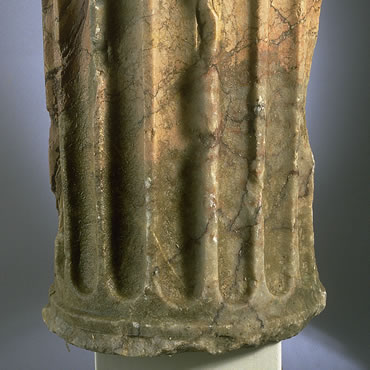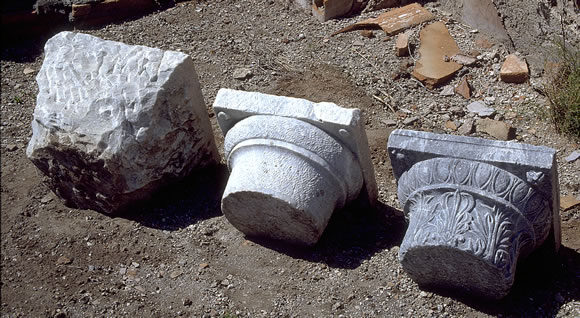11. Stone working

Like all ancient peoples, the Romans used the natural materials available to them to build and decorate their buildings. Among these natural materials were the stones that were most easily obtainable, such as Nocera tufa, Sarno limestone, and volcanic rock.
With the conquest of Greece and Asia Minor, however, came the importation of marble and precious stones, which became increasingly widespread in public and private architecture.
This phenomenon can also be observed in Pompeii, where the originally-used local stones were gradually replaced with marble and other colored stones. The highly-prized texture of marble was also skillfully imitated with painting techniques.
Buildings and streets in Pompeii were constructed using readily available stone: so-called Sarno limestone, a tufa from Nocera, and volcanic rock from Vesuvius, which was also used for mill-stones. The conquests of Greece, Asia Minor, and finally of Egypt, brought contact with the great monuments of these civilisations. This stimulated the importing of high quality stone such as marble, and other stone of various colours.
At Pompeii, marble and prized stone were used in public buildings and in private houses, where they were also used for furnishings. Pompeian painters, on the other hand, specialised in imitation marble.
Marble was worked in specialist workshops: blocks were cut with special saws, the performance of which was assisted by the application of sand to the channel. Decorative elements were designed by means of a compass and made with instruments such as the bow drill.


